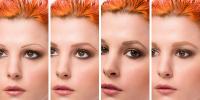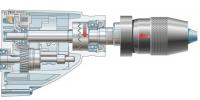Antenna for router to strengthen Wi-Fi signal
Wireless Internet is one of those things without which you can no longer imagine life. Now you can use gadgets, game consoles, and Internet-based household appliances from anywhere in your home and office. But to run all these things simultaneously, you need good potential.
The simplest way to boost a wireless signal is to use an external amplifier for your router, which you can buy, or make an antenna yourself. As you gain experience and master the basics, you begin to better understand how to make the right choice.
Antenna polarization
Wi-Fi communications rely on radio frequency energy that is transmitted and received through antennas.
Receiving and transmitting antennas are devices that emit radio waves when electrical energy is applied. Radio waves, like all waves in the electromagnetic spectrum, are measured in units of frequency, Hertz. When talking about radio waves, the term "wavelength" is often used. Wavelength (in meters) = 300 / frequency (in MHz). This relationship between frequency and wavelength is especially important for calculations and antenna design.
The orientation of the antenna relative to the earth's surface is called its "polarization". Structures that are designed to transmit radio waves, oriented generally parallel to the earth's surface, are called "horizontal". If the impact is directed at right angles to the earth’s surface, then we are talking about “vertical” structures.
Some antennas can be used in any polarization by simply changing the position. Factors associated with choosing one polarization over another include operating frequency, desired coverage, mechanical limitations, and common practice.
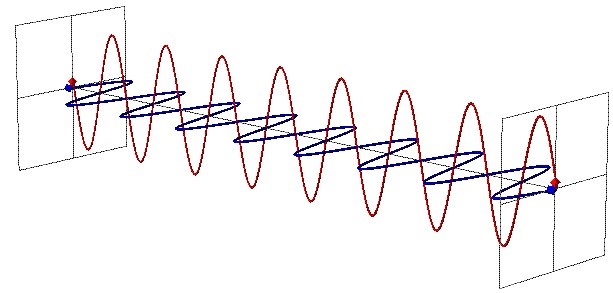
It is very important to consider that all antennas in a communication system must use the same polarization. Circular or elliptical polarization is sometimes used to maximize compatibility.
Strengthening the reception power and signal of the router
An antenna transmits (and receives) radio waves better in certain directions, thereby increasing the effective radiated power.
Note! The total radiated power does not increase, but simply becomes stronger in one or more directions and weaker in other directions.
This "gain" is applied to both the transmitted and received signal. The unit of measurement for quantitative gain is the decibel or dB, which was named after Alexander Graham Bell.
Important! Higher dB values indicate higher gain.
Main types of antennas
What should you consider when creating an antenna? To work on signal amplification, it is always important to remember some features of signal transmission over distances. The choice of antenna device type can significantly affect the communication range and stability.
All Wi Fi antennas are divided into two types:
- directed,
- omnidirectional.
Which, in turn, are:
- internal,
- external.
In addition, when installing the device, you need to take into account the following: a mismatch in the polarizations of the access points will lead to the fact that in one of the positions the quality level will increase, and in the other it will disappear altogether.
Omnidirectional
The best option to extend the range of your home Internet system is to install an external antenna with good gain and omnidirectionality. An omnidirectional antenna is usually a vertically polarized antenna. In remote areas where cellular communications are weak, there is no point in installing such a device. This option is more applicable in urban environments.
Remember! Omnidirectional antenna models will naturally interfere with each other if improperly placed in close proximity to a conventional router.

One of the types of omnidirectional antenna with increased gain is a vertical collinear wi-fi antenna with one feed point and phasing of the elements.
Directed
The antenna is a passive device that does not add power to the signal. However, there are methods to increase the proportion of energy transferred in a particular direction by reducing the proportion of energy transferred in other directions.
If you use directional antenna amplifiers, you can significantly improve the Wi-Fi coverage area.

One of the least common (due to their high cost) types of antennas in cellular communications are sector antennas. The devices allow you to provide a high level of Internet connection if you use multi-panel installation schemes. Vertical and horizontal beam focusing (90, 120 degrees) helps prevent interference from other antennas.
How to connect free Internet Wi-Fi
There are several ways to strengthen the signal so that you can connect to accessible points or to a neighbor’s router who shares his Wi-Fi password.
Powerful DIY antenna
You can make a directional wifi antenna amplifier yourself, fortunately, there are many similar circuits on the Internet today. For example, a double biquad antenna, the gain of which is 12 dB. For assembly you will need copper wire with a diameter of 2 to 3 mm and a length of 300 mm.
A foil getinax plate can be used as a reflector. Foil getinax is pressed paper impregnated with adhesive and covered with copper foil. If this is not the case, then you can use any metal, for example, the lid of an old system unit or an ordinary beer can.
The first thing you need to start with is to bend a double figure eight from wire with sides of 30 mm squares. To do this, you need to mark the wire into 8 equal parts, bend it in the marked places at an angle of 90 degrees using pliers. The result should be an antenna in the shape of a figure eight.
Next you need to cut out the reflector from the getinax plate. Mark the center on the plate and drill two holes on it: for the antenna and the wire exit. The distance between the wire and the plate must be at least 15 mm.
Next you will need a wi-fi adapter, or rather its small antenna. By drilling a hole in the adapter body, the wire is brought out. The central wire is soldered to the figure eight, and the winding to the leg. This is how a double biquad wifi antenna works. All that remains is to connect it to the laptop and see how it picks up signals. Compared to the built-in antenna for a do-it-yourself router, it’s just a wi-fi gun!
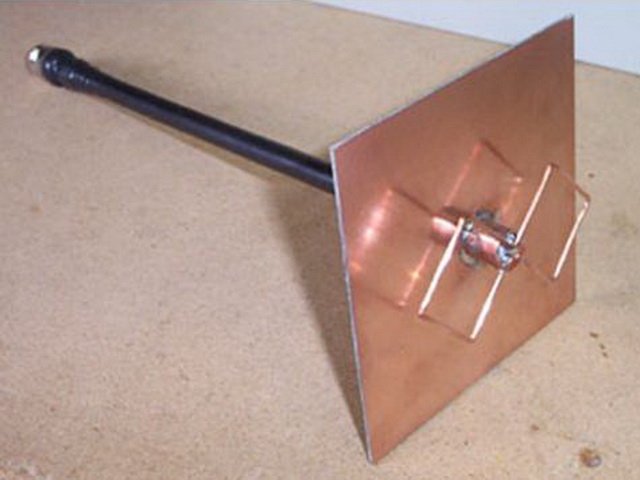
Do-it-yourself ultra-long-range wi-fi antenna
To manufacture an antenna structure for ultra-long-range communications, you will first need a sheet of foil-coated (at least on one side) getinax or fiberglass. The material must be in good condition, of sufficient size and thickness. You will also need vinyl self-adhesive stencils with mounting film, which will protect the mentioned sheets from etching.
The rear reflector wall can be made of any smooth metal sheet, even foil, the main thing is that it is smooth and flat.
The textolite is first marked, then cut with a grinder into two parts measuring 450x350 mm. Before etching, the sheet is cleaned with fine sandpaper, which is quite important.
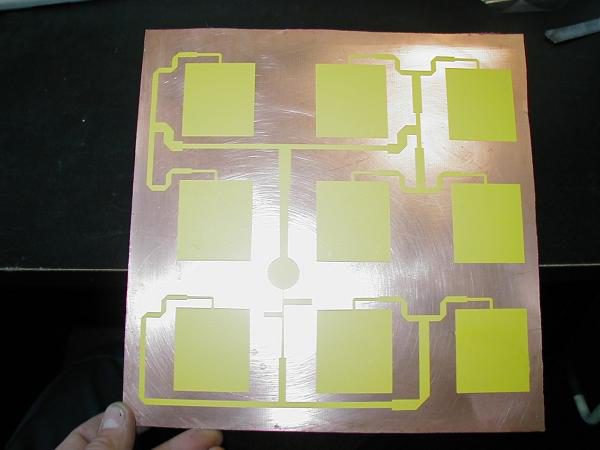
There should be strictly 9 mm between the reflector, which is also cut from getinax, and the board itself. These 9mm can be made using flat plastic. Further assembly consists of gluing the resulting parts together; holes are first left in the soft plastic so that the wire can be soldered later. The wire and connector are purchased on the radio market. The connector is selected according to the router antennas.
The result is an ultra-long-range antenna for a wi-fi router. At a distance of one km from the access point, this powerful homemade antenna has a gain of 80 dB.
Etching a printed circuit board using a solution
Etching is quite a difficult task. The difficulty lies in finding a container for large sheets. If there is none, you can do it yourself again. To make a homemade container you will need a frame of four slats and several layers of film. The film is covered and secured with self-tapping screws.
Ferric chloride is the simplest and most commonly used method for etching a printed circuit board.
- use ferric chloride in a confined small space;
- touch the solution with bare hands;
- use metal utensils or metal for the mixing process;
- use glass or plastic trays during the etching process;
- After use, throw the solution into the ground or somewhere.
- cover your nose and eyes while etching;
- After etching, the solution can be reused once, but must be stored in a cool place away from sunlight.
There are many interesting options on the Internet on how to make a wifi antenna that you can use. For example, you can make a directional model from an omnidirectional antenna. To do this, it is enough to attach a reflective screen behind it, for example, from the same sheet of foil.
All that remains is to choose a suitable wifi antenna, increase the network range and not be separated from Wi-Fi even for a second.

